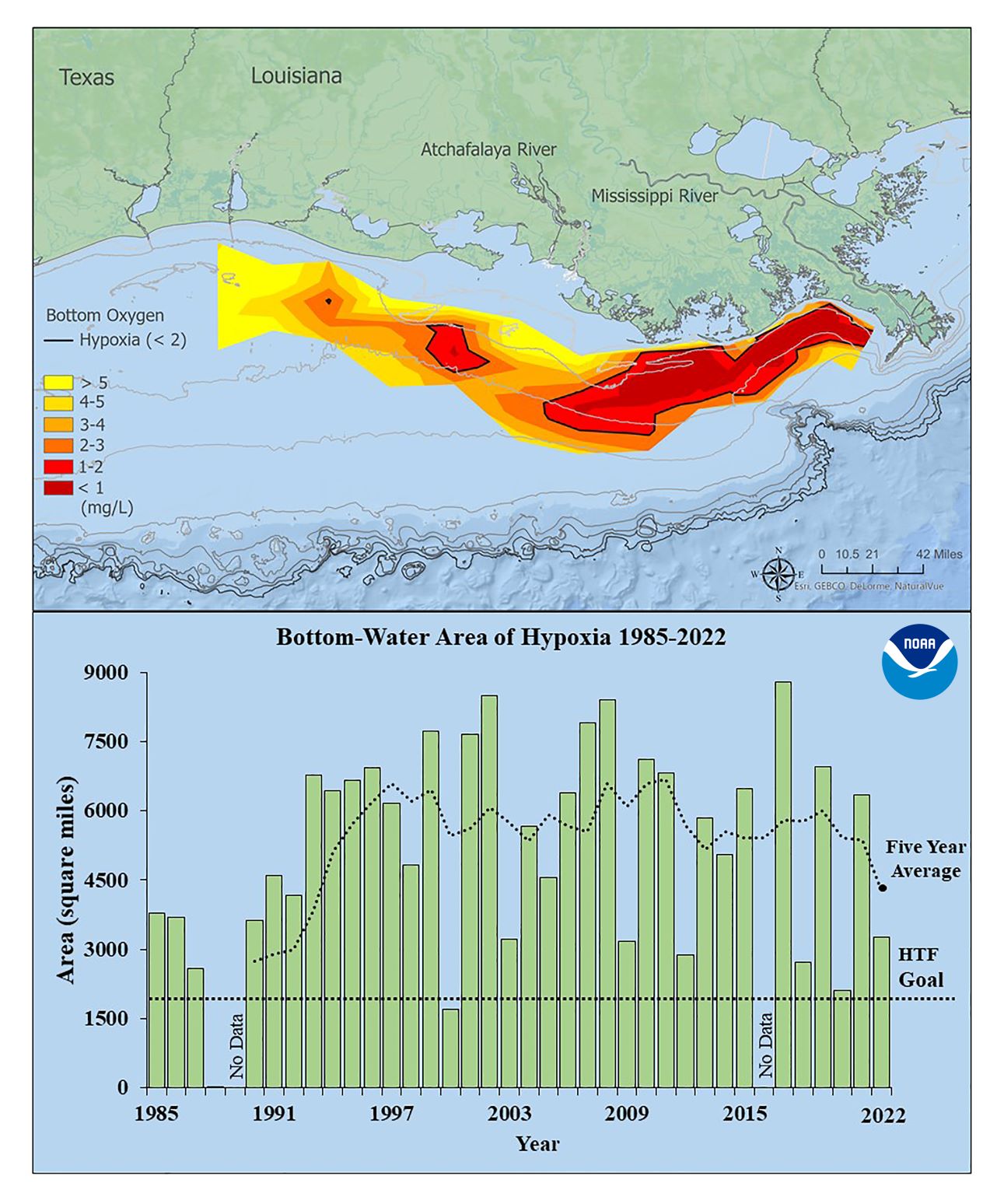
NCCOS-supported scientists have determined that this year’s Gulf of Mexico “dead zone” — an area of low oxygen that can kill fish and marine life — is approximately 3,275 square miles, equivalent to more than two million acres of habitat potentially unavailable to fish and bottom species.
This measurement brings the five-year average to 4,280 square miles, which is more than two times larger than the 2035 target set by the Mississippi River/Gulf of Mexico Hypoxia Task Force (HTF). The annual dead zone survey was led by scientists at Louisiana State University and the Louisiana Universities Marine Consortium (LUMCON) during a research cruise from July 25 – August 1 aboard the LUMCON R/V Pelican.
In June 2022, NOAA forecasted an average-sized hypoxic zone of 5,364 square miles (the record of 8,776 square miles was set in 2017). While the model results overestimated the measured size of the zone this year, they were within the expected margin of uncertainty for the forecast and provide further evidence of the robustness of the models to relate nutrient inputs to observed hypoxia size in the summer.
The Mississippi River discharge was below the summer average, resulting in a lower flow that is unable to support the normal layering of the water column, allowing dissolved oxygen from the surface waters to diffuse more easily to the seabed. The ecosystem subject to hypoxia was characterized by lower turbidity, lower algal biomass, lower nutrients, and higher salinity in the surface waters.
The HTF uses the annual hypoxic zone size determination as a key metric to measure progress toward achieving the five-year average target of 1,900 square miles or smaller by 2035. Maintaining ongoing summer surveys and calculating a five-year average allows scientists to capture the true dynamic nature of the zone more than a single annual measurement. Additionally, initiatives such as NOAA’s Runoff Risk Forecast, designed to help farmers apply fertilizer at optimum times to ensure it stays on fields, are reaching more states and help limit nutrient runoff to the Gulf.
Exposure to hypoxic waters has been found to alter fish diets, growth rates, reproduction, habitat use, and catchability. NOAA continues to support monitoring and research efforts to understand the dead zone as well as to study the impacts of hypoxia on fish and fisheries in the Gulf of Mexico and elsewhere through its Coastal Hypoxia Research Program and the Northern Gulf Institute. This year, for the first time, scientists from NOAA Fisheries and North Carolina State University began using an experimental model to better understand where shrimp could be found relative to the hypoxic zone.
Data from this cruise are also used by NOAA and its partners to refine models to more accurately simulate the relationships between river discharge, nutrient loads, and oceanographic conditions that can cause and sustain hypoxic conditions. For more information about the 2022 Gulf of Mexico dead zone, view the NOAA Press Release or watch this Ocean Today video.
